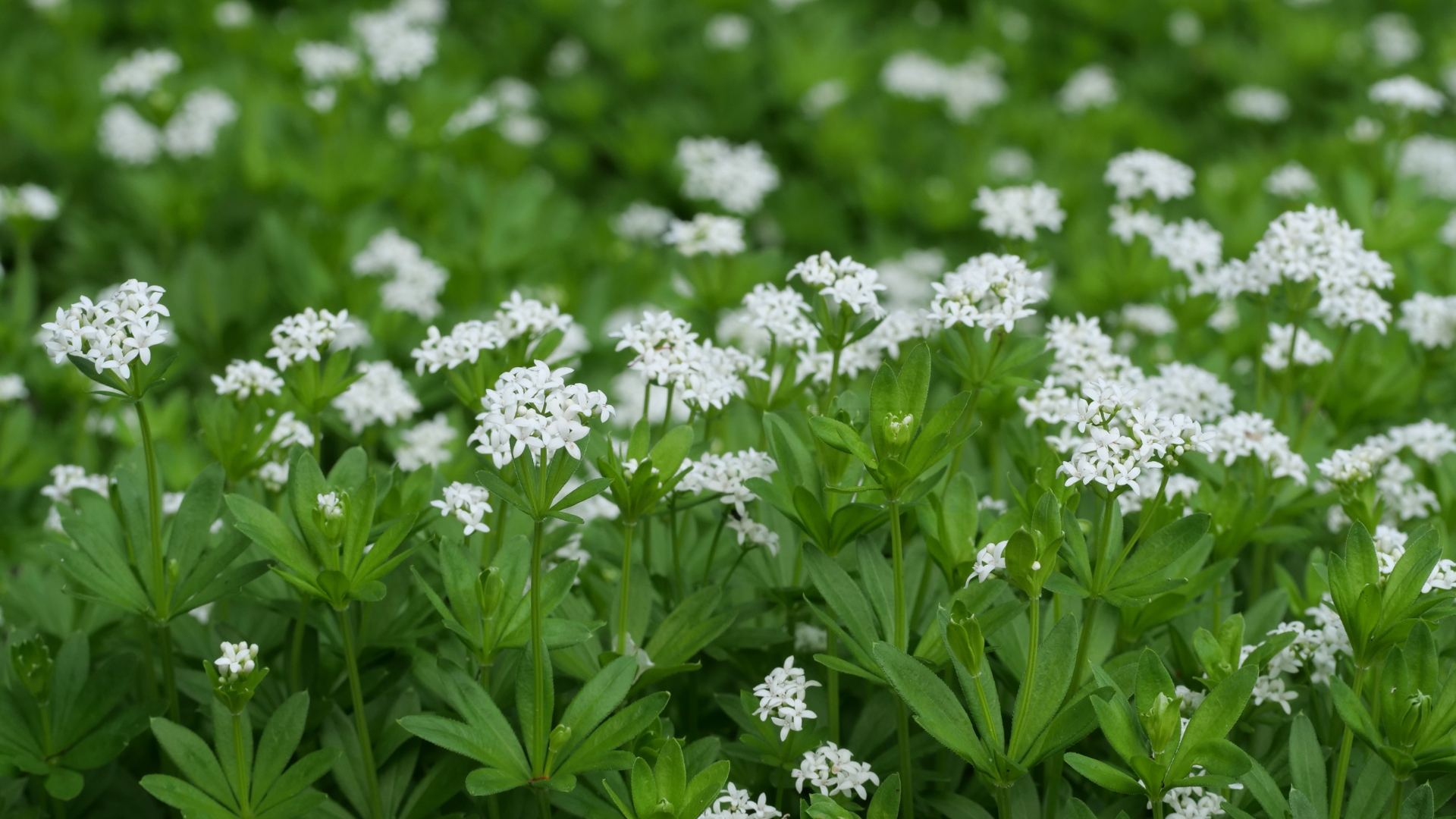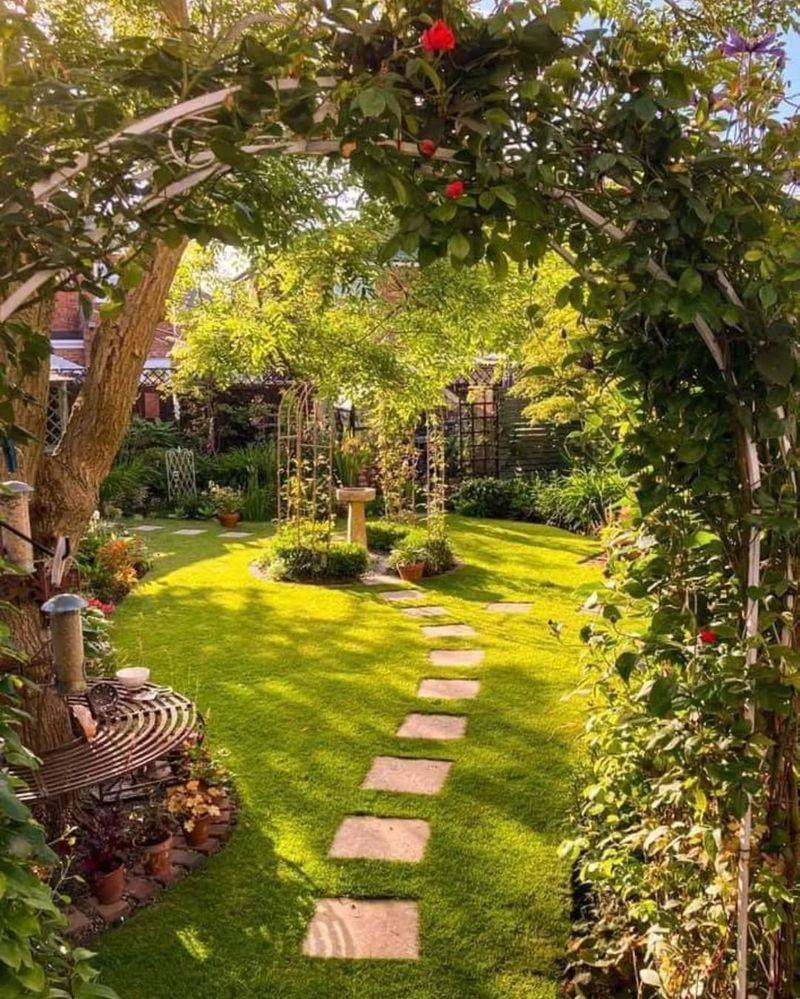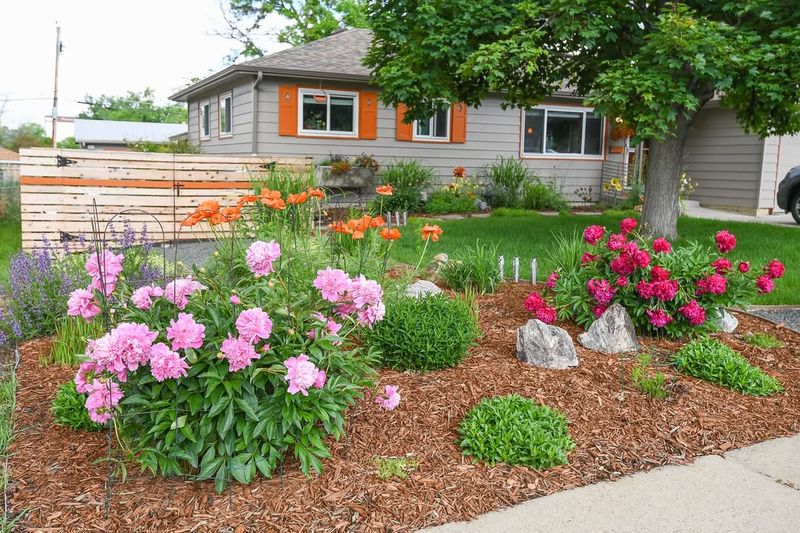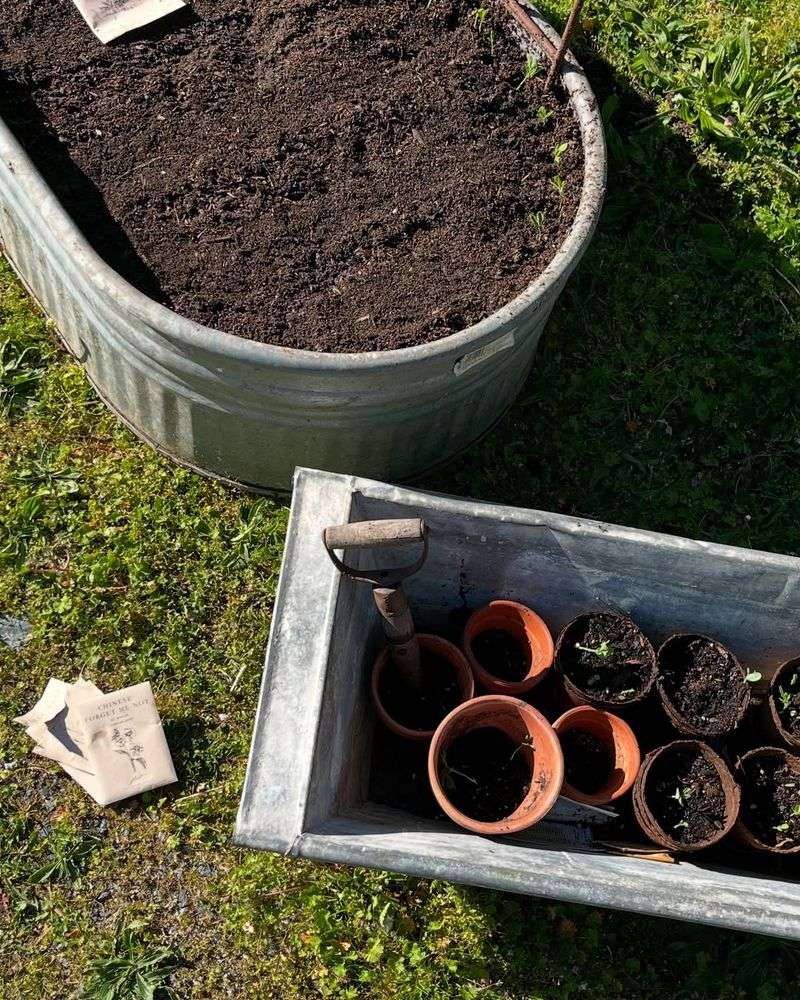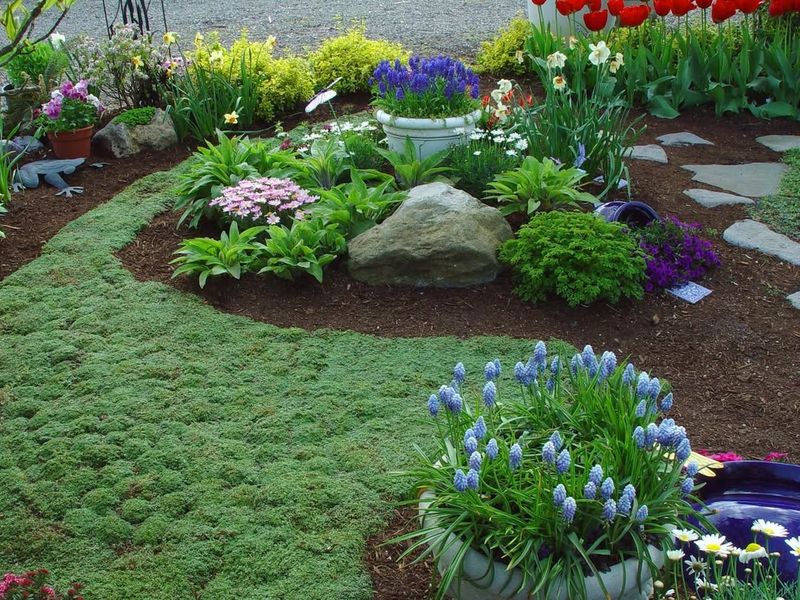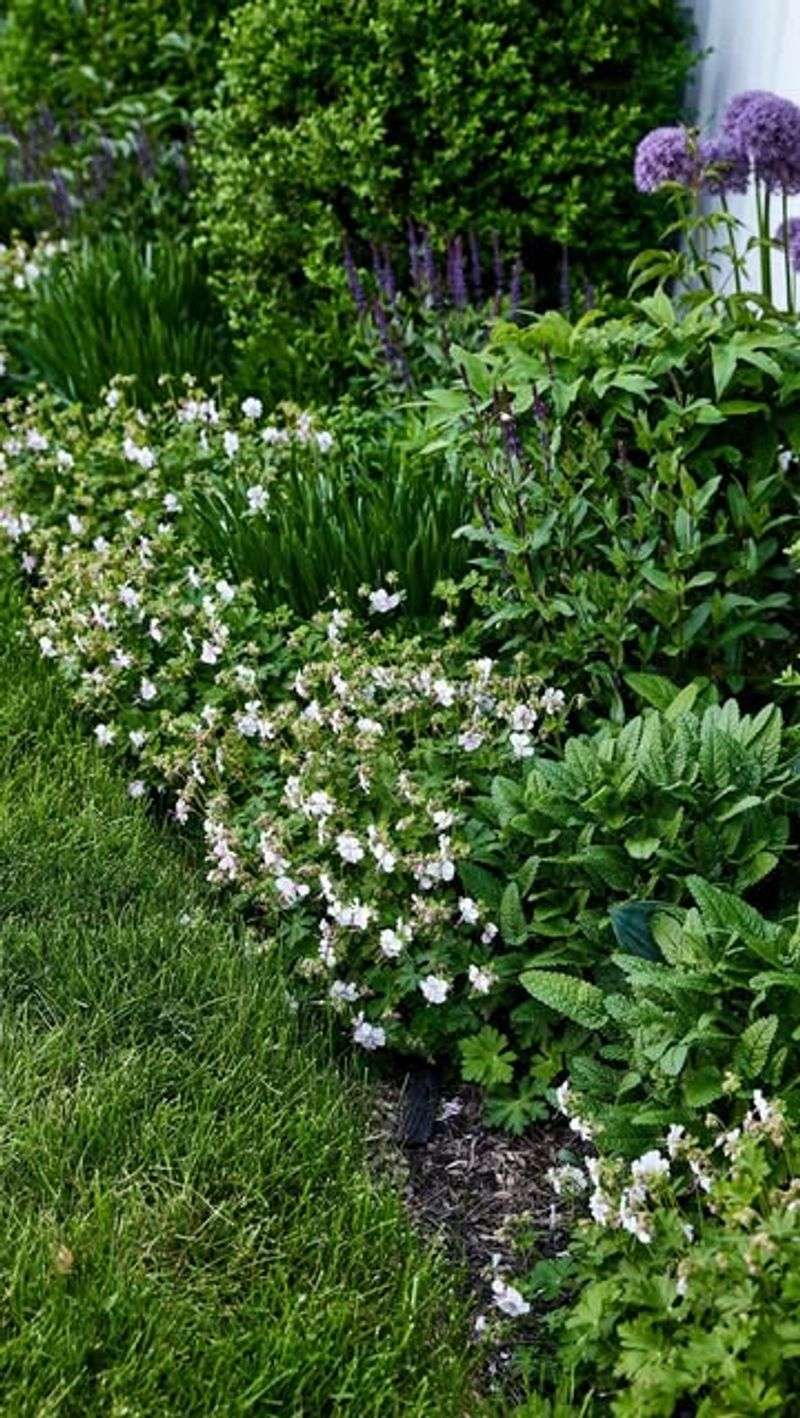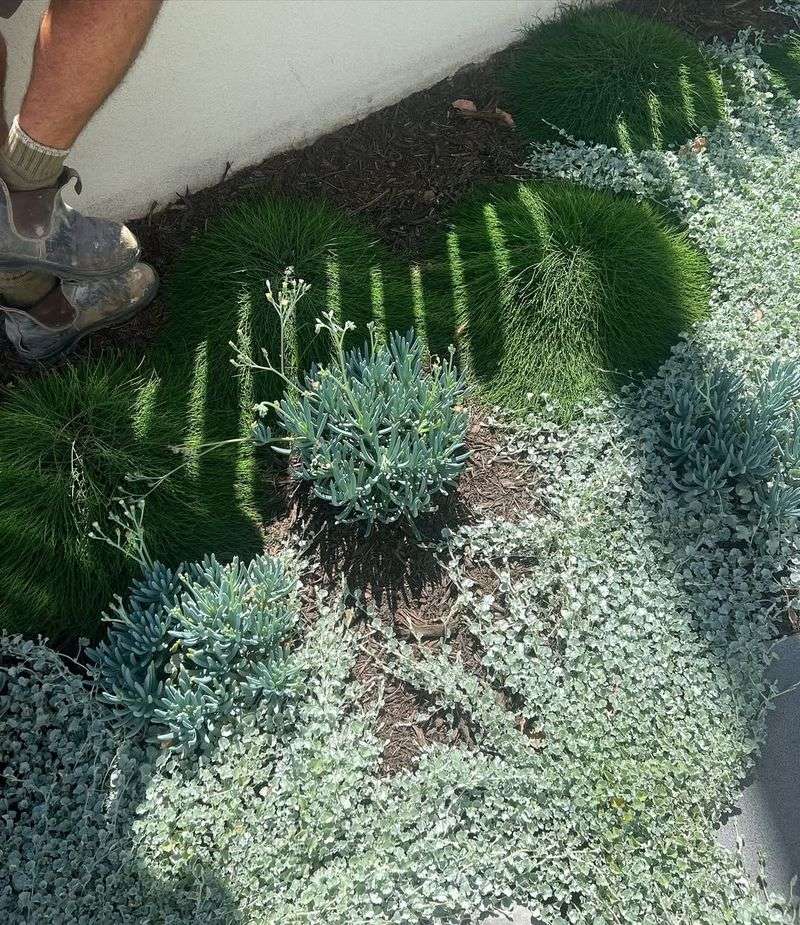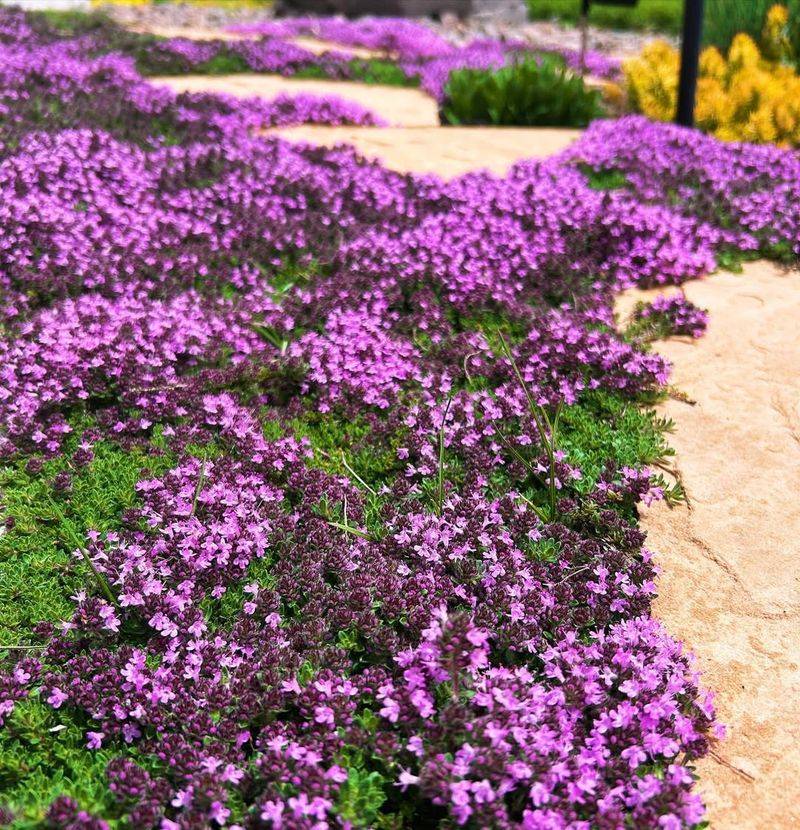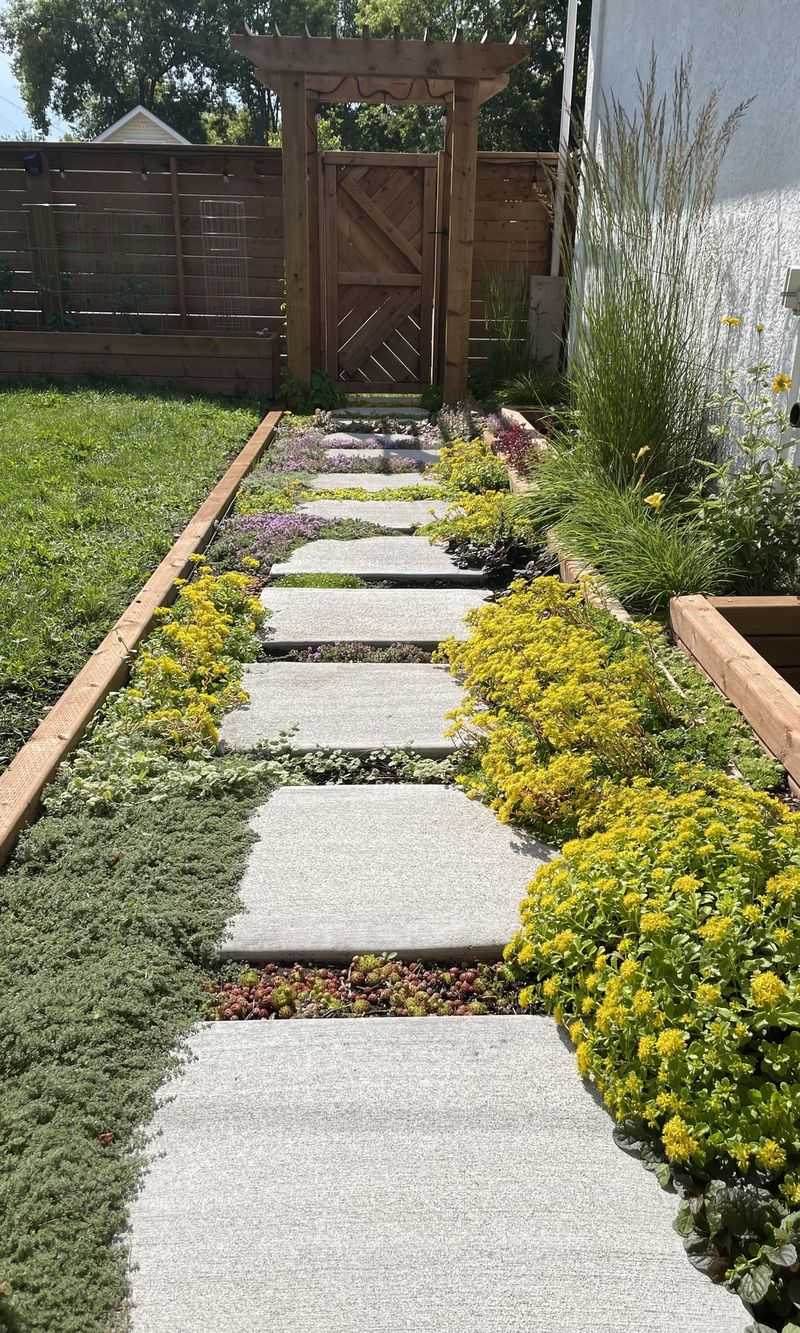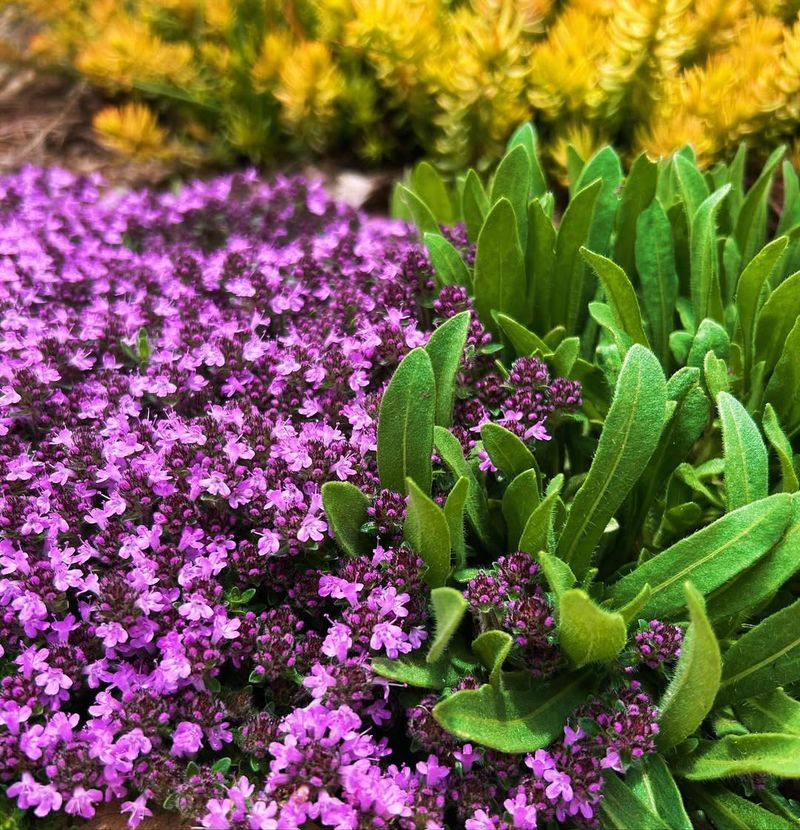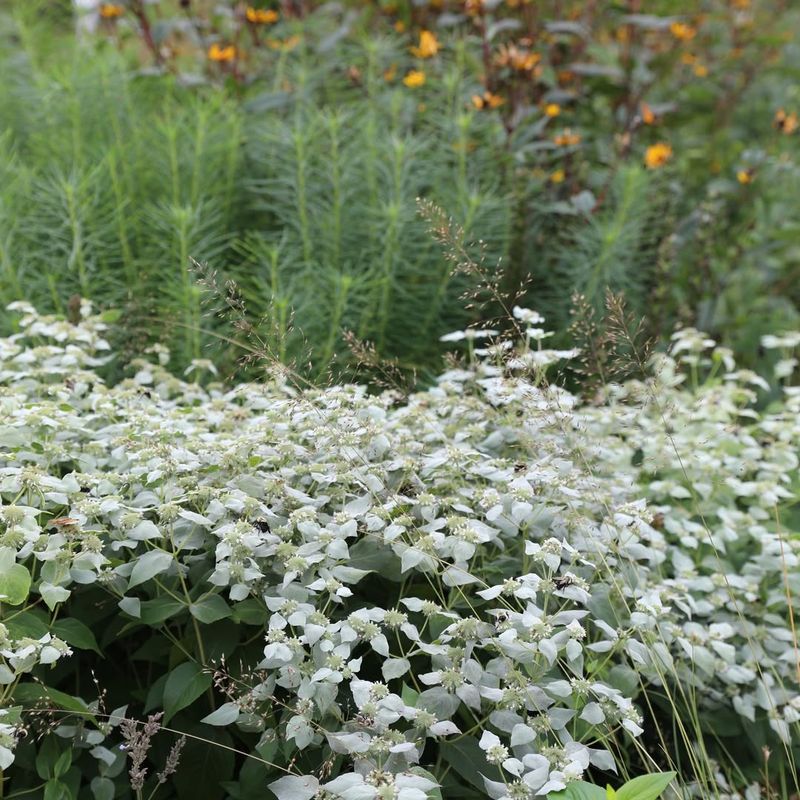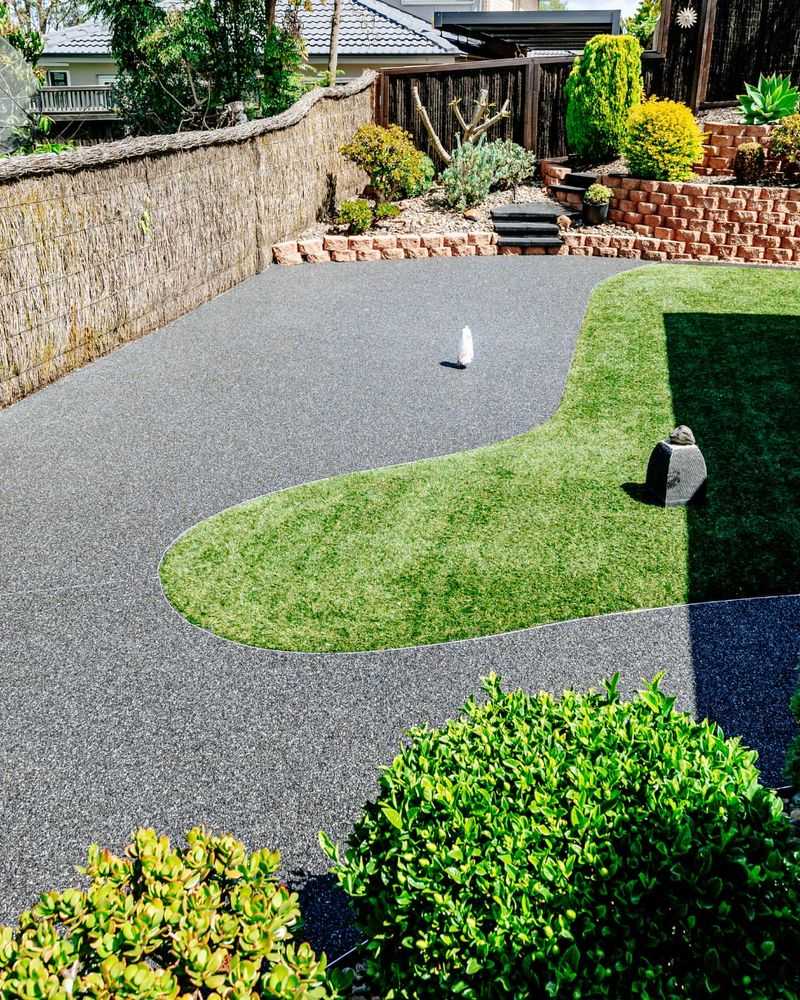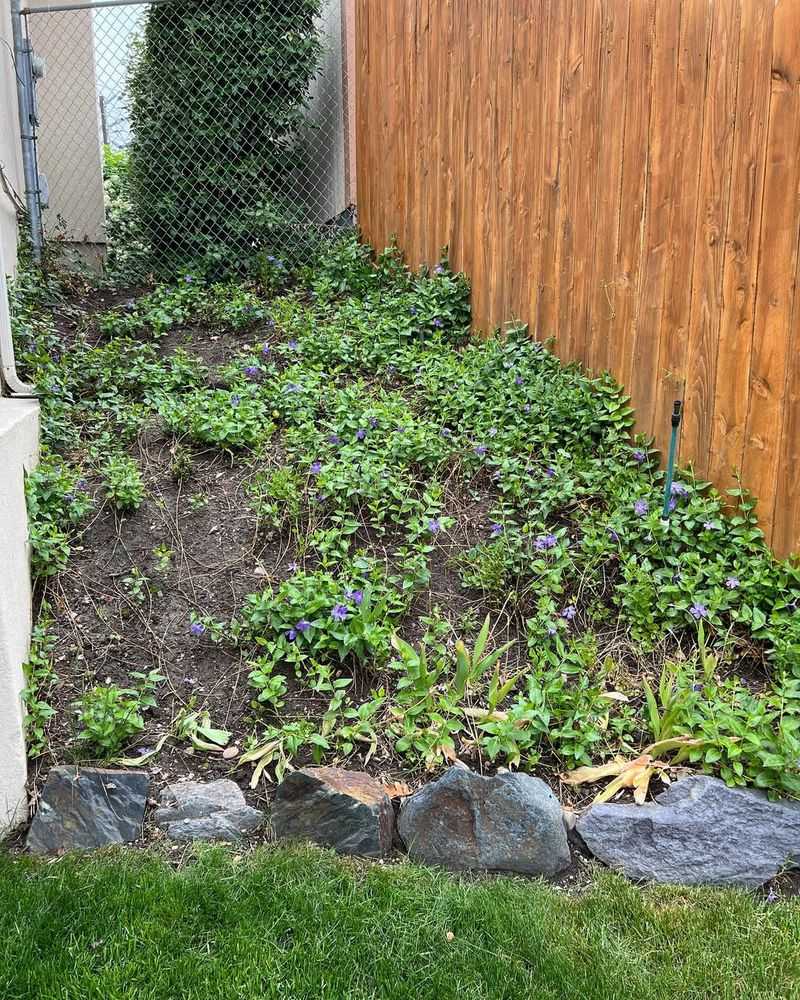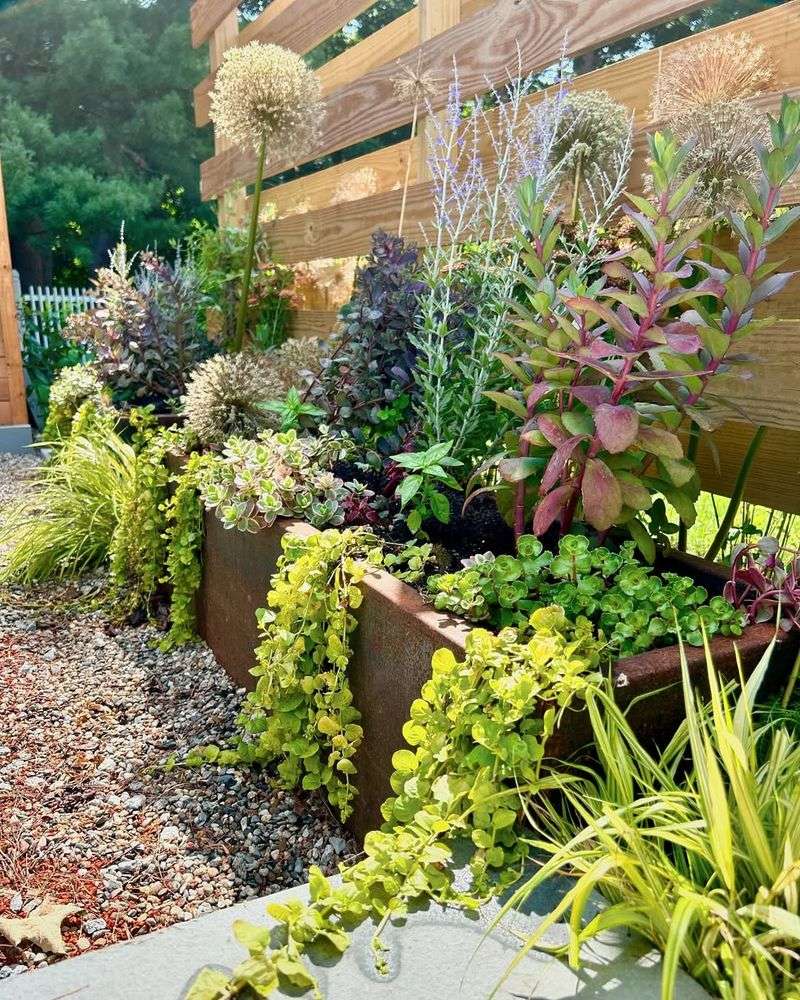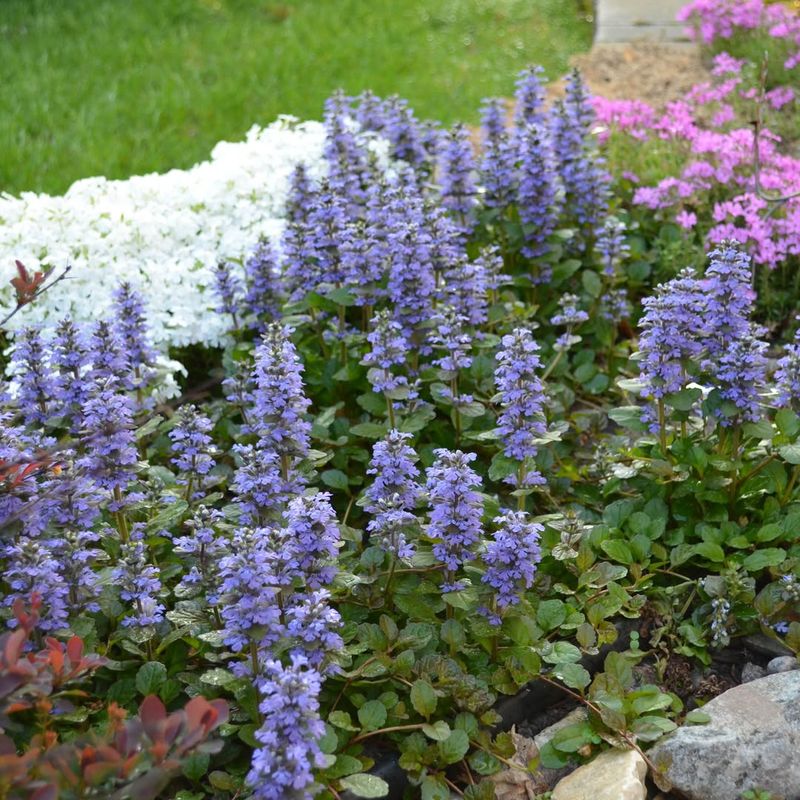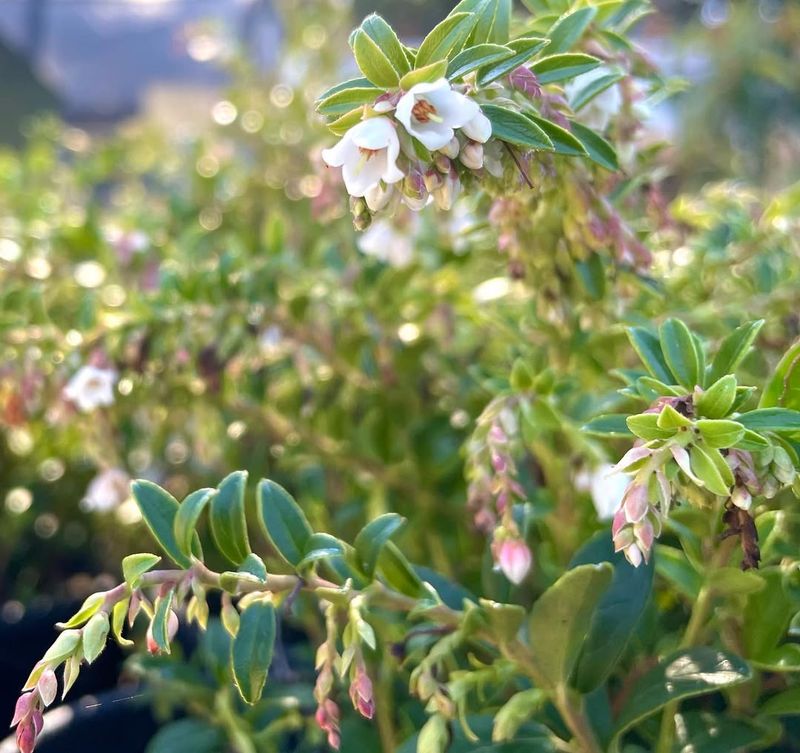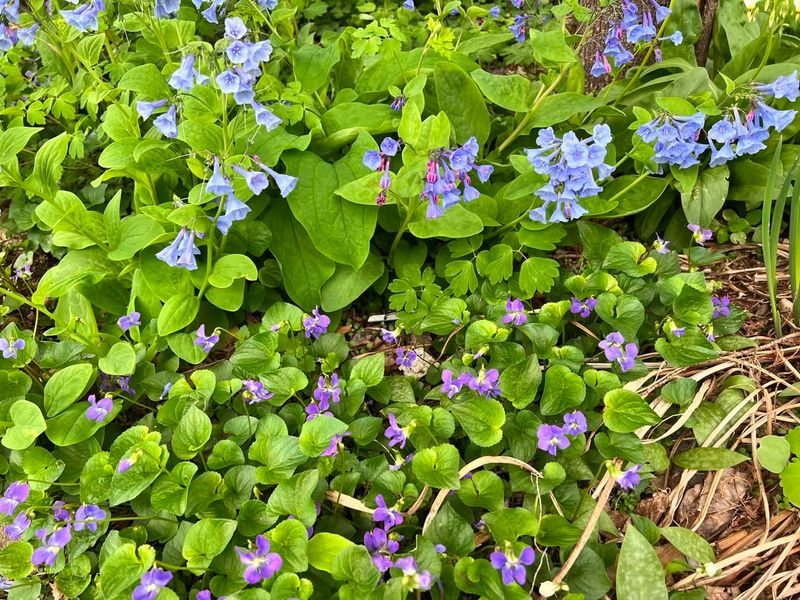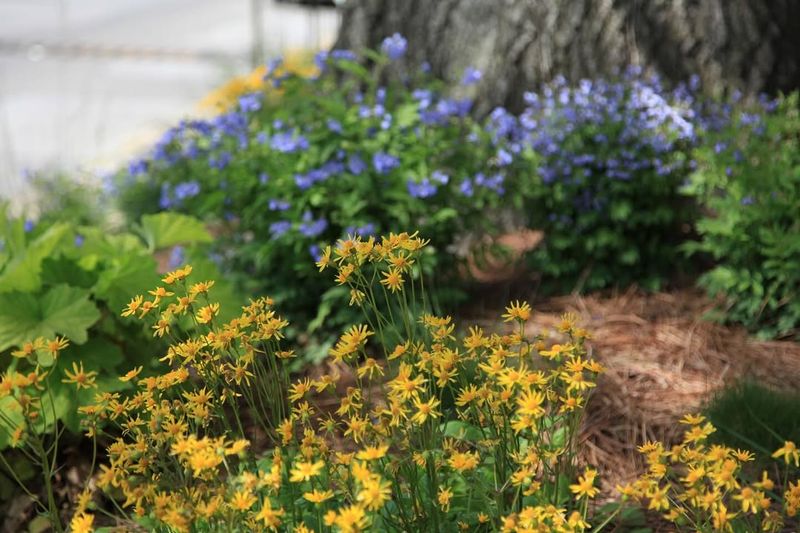Hey there, fellow garden enthusiasts! If you’re like me, constantly searching for that perfect touch to transform your garden into a lush paradise, then you know the magic of ground cover plants. They’re the unsung heroes of our yards, spreading beauty and reducing those pesky weeds. Let’s get into some fun and quirky tips to help your ground cover plants not just grow, but thrive like they own the place!
1. Optimize Sunlight Exposure
Sunlight plays a crucial role in plant health. Position your ground cover plants where they can enjoy the morning sun for optimal growth. It’s like a breakfast smoothie for them—energy-packed and refreshing! But, beware of the scorching afternoon sun that could turn your lush greenery into a sorry sight.
Ensure they have some shade when the sun is at its fiercest. If you notice your plants looking a bit sunburned, they might be whispering for a parasol or a little relocation. Remember, even plants need a perfect tan, not a sunburn!
2. Water Wisely
Water is life, but too much love can drown! When watering your ground cover plants, aim for moderation. Give them a deep soak once or twice a week, depending on the weather. It’s like the perfect amount of coffee—not too little, not too much.
Make sure the soil is well-draining to avoid soggy roots, which could lead to root rot. If the leaves start looking droopy, they might be hinting toward a thirst for some hydration. Finding that watering sweet spot might require a bit of trial and error, but your plants will thank you!
3. Choose the Right Soil
Soil is the bedrock of any plant’s existence. Your ground cover plants will thrive in well-draining soil rich in organic matter. Think of it as a five-star buffet for your plants. Mix in some compost to provide essential nutrients and improve soil structure.
If your soil is too clayey or sandy, amend it to achieve the right texture. Remember, happy soil makes happy plants! Observe how your plants react to the soil over time. If they’re throwing a tantrum, it might be time for a soil makeover. Don’t let them sulk!
4. Mulch Magic
Mulch is like a cozy blanket for your plants. Spread a layer of organic mulch around your ground cover plants to retain moisture and keep weeds at bay. It’s the secret sauce for a thriving garden! Mulch also adds a touch of elegance to your yard, making everything look neat and tidy.
Choose mulch that decomposes over time, enriching the soil with nutrients. Regularly check the mulch layer to ensure it’s doing its job. If it seems thin, add a bit more to maintain its magic. Your plants will appreciate the extra care!
5. Prune with Precision
Pruning is like a haircut for your plants—essential for health and aesthetics. Regular pruning encourages new growth and prevents your ground cover plants from becoming unruly. Use sharp, clean shears to make precise cuts, removing dead or diseased parts without damaging healthy areas.
It’s also a chance to shape your plants as desired, keeping them tidy. If you’re unsure, start with small trims; you can always cut more as needed. Watch out for signs of stress in your plants after pruning, adjusting your technique if necessary. It’s plant pampering at its finest!
6. Feed with Fertilizers
Plants need their vitamins too! Feed your ground cover plants with a balanced fertilizer during the growing season. Organic fertilizers are a great option, offering a slow-release of nutrients. Consider them like multivitamins for your garden. Be mindful of the application rate; too much can be as harmful as too little.
Apply the fertilizer evenly, and water it in well. Over time, observe how your plants respond. If they’re not looking their best, a nutritional tweak might be in order. Remember, a well-fed plant is a happy, flourishing plant!
7. Control Weeds Effectively
Weeds are garden party crashers, and your job is the bouncer. Regularly inspect your ground cover beds for weeds, and remove them promptly. Hand-pulling them when small can prevent future headaches. It’s a bit like weeding out bad habits—persistent but rewarding.
Mulching also helps, acting as a natural weed suppressor. For stubborn offenders, consider using a targeted herbicide, but only as a last resort. Constant vigilance and action are key. A weed-free garden is not only more beautiful but allows your ground cover plants to thrive without competition.
8. Create Diversity
Variety is the spice of life, even in your garden! Mixing different species of ground cover plants can create a visually appealing tapestry. Each plant has its own unique charm, adding texture, color, and interest to your garden. Plus, diversity can improve resilience against pests and diseases. It’s like hosting a garden party with a mix of fascinating guests.
Be sure to choose plants that complement each other in growth habits and care requirements. A diverse garden not only looks stunning but also supports a healthier ecosystem overall. Your yard will be the talk of the town!
9. Protect from Pests
Pests can be the pesky uninvited guests at your garden party. To keep them at bay, use natural pest deterrents such as garlic or neem oil sprays. They’re like the friendly bouncer at the garden club, keeping troublemakers out. Regularly check for signs of infestation, and address issues promptly.
Encourage beneficial insects, like ladybugs, to take up residence in your garden. They’re nature’s pest control agents! With vigilance and proactive care, your ground cover plants can flourish without the threat of pests. A pest-free garden is a happy garden!
10. Space Plants Properly
Space is not just the final frontier, but also essential for plant growth. When planting ground cover, give each plant enough space to spread and thrive. It’s like having your own room in a crowded house—necessary for happiness.
Overcrowding can lead to competition for resources and poor air circulation, which might invite diseases. Proper spacing allows sunlight to reach all parts of your plants, promoting healthy growth. As your plants mature, they’ll fill in the gaps beautifully. Patience is key here; it might look sparse at first, but the results will be worth the wait!
11. Choose the Right Plants
Choosing the right ground cover plants is like picking the perfect team. Consider your yard’s conditions—sunlight, soil type, and climate. Select plants that will thrive in these conditions to ensure success. It’s like matching personalities to foster harmony.
Research different species and consult with local nurseries if needed. The right plant in the right place makes all the difference in achieving a lush, thriving garden. Over time, you’ll develop a keen eye for what works best. Remember, a well-chosen plant is a happy plant, ready to show off its glory in your yard!
12. Observe Seasonal Changes
Mother Nature loves to change her wardrobe, and so do your plants! Ground cover plants can vary in appearance through the seasons. Understanding these changes helps you care for them better. It’s like adjusting your wardrobe for the weather. In spring and summer, expect vibrant growth and blooms.
As autumn arrives, some might display stunning colors before going dormant in winter. Embrace these transformations, and adjust your care routine accordingly. Seasonal awareness leads to a more resilient garden, ready to face whatever nature throws its way. Enjoy the dynamic beauty year-round!
13. Encourage Healthy Competition
A little competition never hurt anyone, even in the plant world! Pairing compatible ground cover plants can encourage healthy growth. They’ll compete for resources but in a way that spurs them to thrive. It’s like a friendly rivalry, pushing each other to be the best.
Choose plants with similar care requirements but different growth habits to complement each other. Monitor their interactions and make adjustments as needed. This approach not only fills your garden with life but also creates a dynamic environment that’s exciting to watch. Your garden will be buzzing with energy!
14. Monitor and Adapt
Gardening isn’t a set-it-and-forget-it affair. Keep an eye on your ground cover plants, and be ready to adapt as needed. It’s like being a plant detective, always solving the next puzzle. Regular monitoring helps you identify issues early, such as pests or diseases.
Keep a journal of your observations and any changes you make. This record will become invaluable for future decisions. Adapting to your garden’s needs ensures a thriving, healthy environment. Plus, it adds a layer of satisfaction, knowing you’re in tune with your garden’s rhythm. Happy plants, happy gardener!
15. Use Permeable Pathways
Pathways aren’t just for grand entrances; they’re essential for garden health too. Use permeable materials for paths around your ground cover plants. They allow water to seep through, preventing erosion and soil compaction. It’s like having breathable shoes for your garden—comfort and function combined.
Properly designed pathways also guide foot traffic, protecting delicate plants from being trampled. Choose materials like gravel or permeable stone for a practical and attractive solution. Your garden’s layout not only becomes more accessible but also healthier, ensuring a thriving landscape that’s easy to navigate.
16. Protect Against Erosion
Erosion is like the sneaky villain in your garden drama, slowly wearing away your hard work. Planting ground cover on slopes can significantly reduce erosion, as their roots help anchor the soil. For added protection, consider implementing terraces or logs to slow down water runoff.
It’s like building a fortress for your plants, keeping the enemy at bay. Regularly inspect your garden for signs of erosion and take action if needed. Protecting your landscape ensures long-term stability and health. With a solid defense, your garden remains a beautiful oasis, undisturbed by the forces of nature.
17. Encourage Beneficial Insects
Invite the right kind of buzz to your garden by attracting beneficial insects. These little helpers can boost your ground cover plants’ health by controlling pests and aiding in pollination. It’s like having a team of tiny superheroes on your side. Plant flowers that attract pollinators like bees and butterflies.
Create habitats for ladybugs and other beneficial insects. Your garden will not only thrive but also become a bustling hub of activity. Encouraging nature’s allies fosters a balanced ecosystem, ensuring your plants grow strong and vibrant. It’s teamwork at its finest!
18. Choose Drought-Tolerant Varieties
When the going gets tough, the tough choose drought-tolerant plants! These hardy ground covers can withstand dry spells without losing their charm. It’s like having a garden with a built-in survival kit. Opt for varieties adapted to your local climate, reducing the need for constant watering.
They conserve water and maintain lush greenery even in challenging conditions. This choice not only saves resources but also ensures your garden remains vibrant year-round. Drought-tolerant plants offer peace of mind and stunning beauty, proving resilience can be both practical and aesthetically pleasing.
19. Incorporate Edible Ground Covers
Why not make your garden work double duty? Edible ground covers provide beauty and a tasty treat. Imagine picking fresh strawberries right from your garden! It’s like having a secret snack stash, hidden in plain sight. Choose plants that offer both ornamental and culinary value.
They’ll add variety to your garden and your dinner table. Regularly harvest to encourage new growth and prevent over-crowding. This dual-purpose planting not only enhances your garden’s aesthetics but also your lifestyle. A beautiful garden that feeds you—what more could you ask for?
20. Utilize Companion Planting
Companionship isn’t just for humans; plants love it too! Use companion planting to enhance the growth and health of your ground cover plants. It’s like a buddy system, where plants support each other. Pair ground covers with taller plants to create a beneficial microclimate and deter pests.
Choose companions that have similar water and light needs for harmony. This symbiotic relationship enriches your garden’s biodiversity and resilience. Watch how your plants thrive together, forming alliances that boost their beauty and vitality. It’s gardening with a twist of camaraderie!
21. Plan for Pollination
Pollination is the secret ingredient to a flourishing garden. Ensure that your ground cover plants attract pollinators by planting blooms that bees and butterflies love. It’s like hosting a garden soiree with all the right guests. The result? Healthier plants and increased biodiversity.
Regularly check for pollinator activity and adjust your planting if needed. This effort not only supports your garden’s growth but also the local ecosystem. A pollinator-friendly garden buzzes with life, ensuring your plants reach their full potential. It’s nature’s party, and everyone’s invited!
22. Embrace Native Species
Going native is a win-win for your garden. Native ground cover plants are adapted to the local climate and soil, making them easier to care for. It’s like finding the perfect pair of slippers—comfort and ease in one. These plants naturally resist pests and diseases, reducing the need for interventions.
Plus, they support local wildlife, enhancing your garden’s ecological value. By embracing native species, you create a garden that’s both beautiful and sustainable. Your landscape will flourish effortlessly, showcasing the best of what nature offers. It’s gardening the way it’s meant to be!
23. Reflect and Rotate
Reflection can lead to revelation, especially in gardening. Regularly reassess your ground cover layout and consider crop rotation to maintain soil health. It’s like rearranging furniture for a fresh perspective. Rotation prevents soil depletion and disrupts pest cycles, keeping your plants robust.
Plan your garden’s future by learning from past experiences, and don’t be afraid to make changes. This proactive approach ensures a vibrant, dynamic garden that continues to thrive. Your plants will enjoy the change of scenery, and you’ll love the ongoing transformation. It’s gardening with a forward-thinking twist!

